For How Long Does a Neutered Cat Need to Wear a Cone?
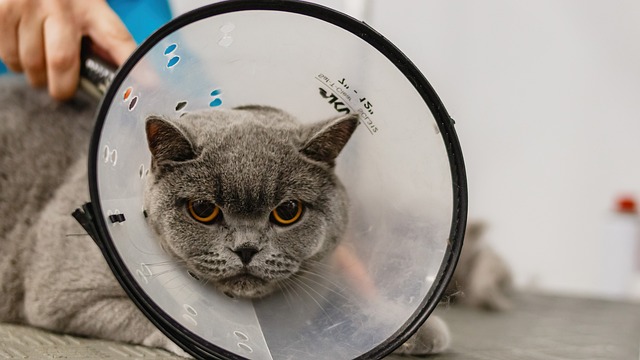
Anxious about how long your cat needs to wear that pesky cone?
Wondering if the end is in sight? 😕
I get it, trust me.
We've all been there, feeling like our feline friend is trapped in kitty prison.
But fear not, my friend, let's dive into this together and find the answers you seek.
How Long Should a Cat Wear a Cone After Neutering?
Listen up, here's the lowdown on how long your cat should rock a cone after getting neutered.
Listen to your vet, they know what's up.
But if you want some general deets, here ya go:
- Young cats bounce back quicker, so they might only need the cone for about 5-7 days. Old timers might need it for 2-3 weeks.
- Depending on the surgery, there can be different healing times. Your vet will tell you how long the cone needs to stay on.
- If your furball is a bundle of energy and loves to jump and play, they might need the cone on longer. Gotta keep them from opening up their incision or causing more trouble.
- Those dissolving staples? Keep the cone on until those buddies disappear.
- Important thing: follow all instructions for wound care. That means you might have to stick with the cone for a while.
The cone has an important job - protecting that new incision and stopping any infections or self-inflicted injuries.
Watch out for signs that your cat is ready to give the cone the boot, like no attempts to lick or scratch the incision, better in essence behavior, and a fully healed, infection-free wound.
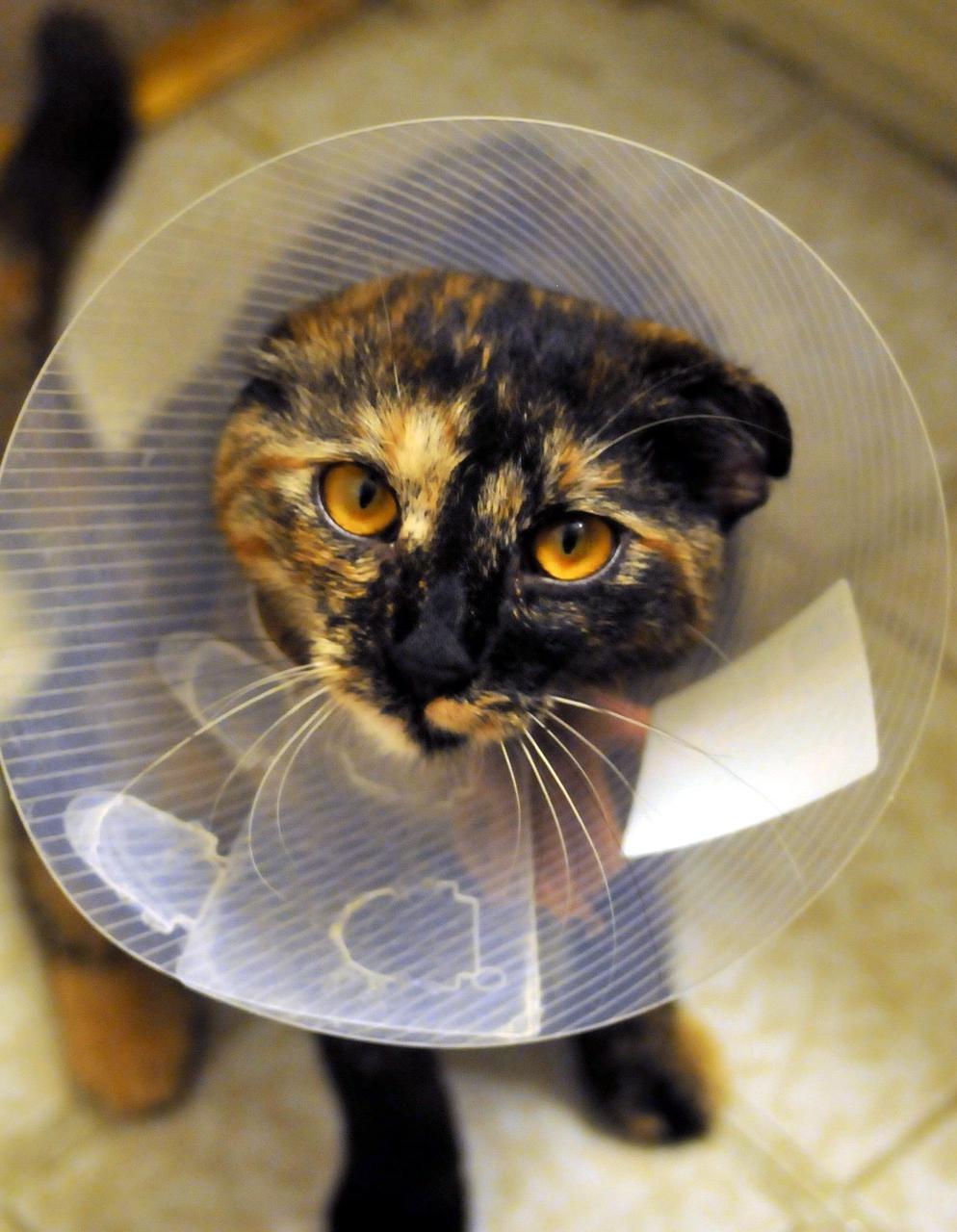
Ultimately, trust your vet and do what feels right for your furry pal. 😺
And hey, if you're anything like me, you may have more questions swirling in your mind.
Well lucky for you, I've got you covered! How Long Does It Take for a Cat to Die if It Stops Eating is my blog post that delves into everything you need to know about how long a cat can live without eating and the potential reasons behind their loss of appetite.
So if you want in-depth information and peace of mind, I highly recommend checking it out.
Trust me, you won't regret it!
What Kind of Cone Should You Take for Your Cat?
Let's talk about the different cones you can choose for your cat, because we all know that traditional cones, also called Elizabethan collars or E-collars, aren't always comfy for our feline pals.
So, you need to explore other options that might suit them better.
One popular choice is inflatable collars.
These are more comfortable for cats who struggle with regular E-collars.
The inflatable design offers protection while still allowing better peripheral vision.
You can also consider soft collars, muzzles, and visors as alternative options.
They provide protection, but give your cat more comfort and don't block their vision as much.
When picking a cone for your cat, you've got plenty of choices. There are hard plastic cones, soft E-collars, inflatable E-collars, pillow collars, and cloth cones.
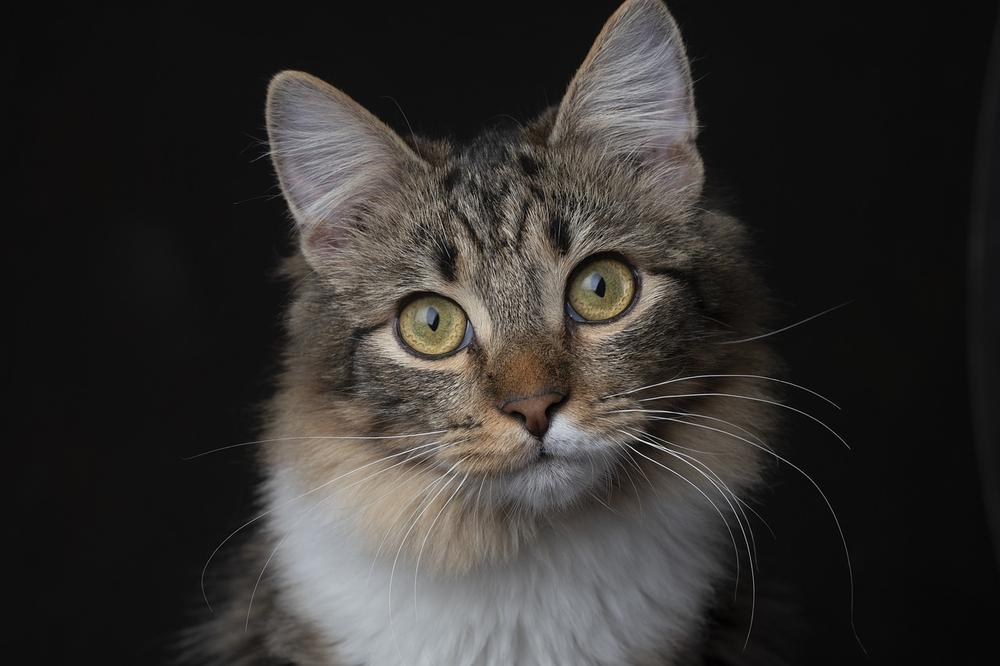
Each one serves a specific purpose and comes in various sizes depending on which part of your cat's body needs protection.
If your cat absolutely won't wear a cone, no need to freak out.
You still have other options to explore.
Just make sure that you speak with your vet to find the best solution for your furry friend.
And if you're having trouble putting on the collar correctly, don't hesitate to ask your vet for guidance.
They can show you the right way to do it and make sure your cat stays safe and protected.
But here's the thing, knowing which type of cone to choose is only half the battle.
The real question is:
How long does your cat actually need to wear it?
Stay tuned to find out the answer and ensure your furry friend's complete comfort throughout their recovery process...
How Should a Cone Fit a Cat?
When you're trying to put a cone on your cat, ensure it's snug but not too tight.
The goal is to find that perfect balance where the collar stays on securely, but your furry friend can still eat, drink, and move comfortably.
To ensure maximum protection, ensure the cone extends a little beyond their nose.
And don't worry about them accessing their food and water, you can place their bowls inside the cone for easy reach.
At first, keep an eye on them to prevent any accidents or mishaps. Cats can be mischievous critters, after all.
And when replacing the E-collar (also known as cone), leave enough space for two fingers between the collar and their neck.
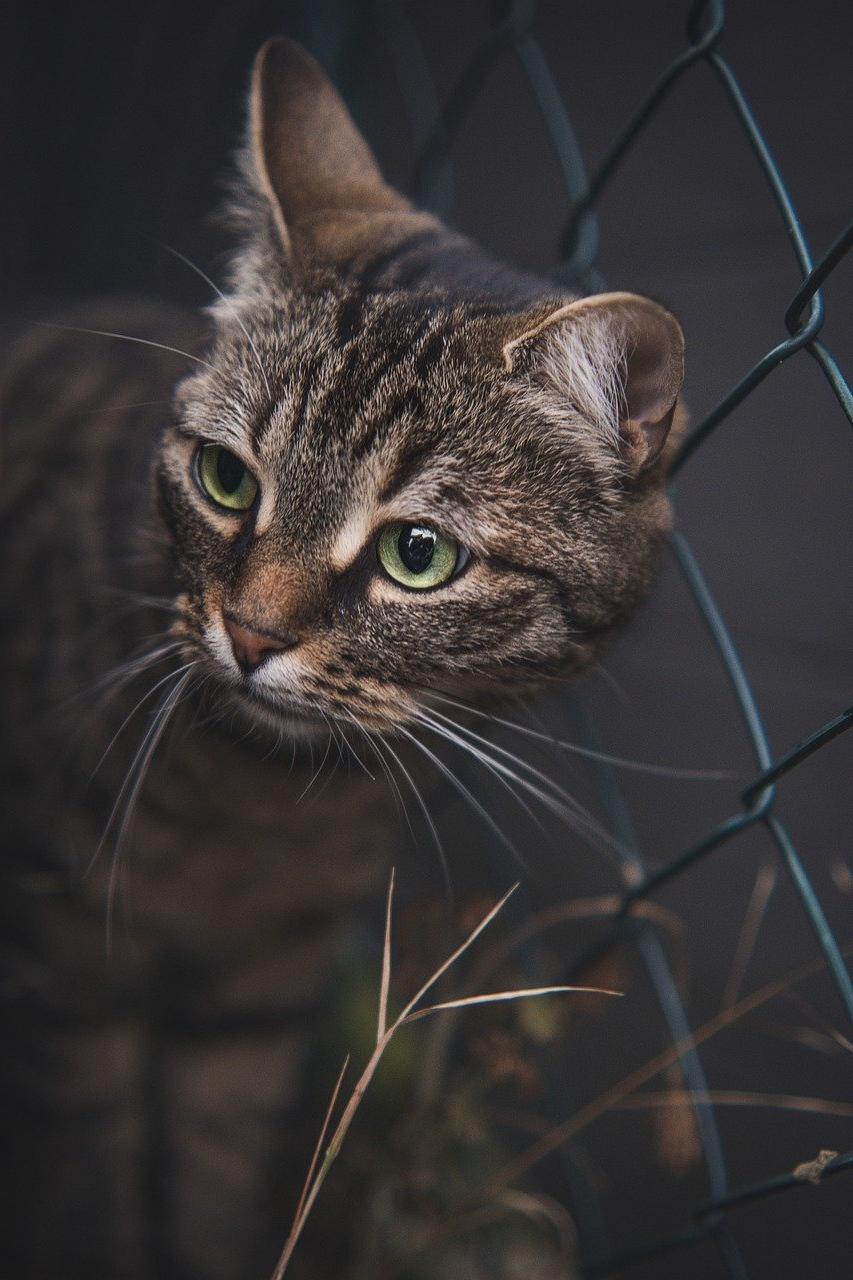
This gives them enough room to maneuver.
But don't stress. With a properly fitted E-collar, your kitty can still enjoy their meals without any hassle.
Just be ready to adjust their bowls accordingly.
Lastly, while your furry companion sports the cone, you ought to regularly groom and brush them. They can't clean themselves like they normally would, so lend them a helping hand.
Now, here's the deal...
While you must ensure a proper fit for your cat's cone, there are other crucial aspects to consider post-neutering.
From wound care and medication administration to monitoring their incision site, let's dive deeper into how you can provide the best care for your furry friend...
How to Clean a Cat With Cone?
When it comes to cleaning your cat with a cone, paying attention and taking care are really important.
- Use a cleanser that your vet approves of to clean the areas around the cone where your cat can't groom. This will keep their skin clean and prevent any discomfort.
- Gently wipe away any dirt, debris, or irritating stuff that might have gotten on your cat's fur. Make sure to be gentle and not cause any more discomfort for your cat.
- After surgery, it's crucial to keep your cat's wound dry and give them rest and comfort. This will help their healing process and avoid infections or complications.
- Keep an eye on the incision site regularly for any changes or signs of infection. If you see any redness, swelling, or discharge, get in touch with your vet right away.
- Follow your vet's instructions for giving any prescribed medication or painkillers to your cat. This will help manage their pain and ensure they recover well.
- Don't bathe your cat until their incision is completely healed, which usually takes about 10-14 days. Water can disrupt the healing process and increase the risk of infection.
- Check your cat's E-collar every day for any signs of irritation or abrasions on their neck. Keep it clean and adjust it if needed to make sure your cat feels comfortable during the recovery period.
Following these tips will ensure that your cat stays comfortable and safe while wearing a cone after surgery.
How Could Your Cat React to the Cone Around Its Neck?
When you stick a cone on your cat's neck, they might not like it at first.
They could resist or feel uncomfortable. But don't worry, you can help them get used to it.
The cone is important because it stops your cat from licking the incision spot and shields it from infections.
Even if your cat tries to bolt, you ought to stand your ground and ensure the cone stays put.
If the cone keeps slipping off, you can tie it more securely to their regular collar. Or, you can even fashion a harness!
Before the surgery, let your cat get used to the cone gradually to ease them into it.
Oh, and don't forget, the fit shouldn't be too tight or too loose.
To make them feel cozier, remove any obstacles around them and raise their food and water bowls. Offer distractions and toys, and give them praise for wearing the cone.
It's worth mentioning that not all cats need a cone after surgery. Some might not lick or chew.
Encourage them, reward them, and create a comfy home environment to aid in their adjustment.
Keep a close eye on them outside because the cone limits their peripheral vision.
This may make them jumpy or easily startled.
So, during this period of adjustment, be mindful of things getting knocked over or your cat getting stuck in small spaces.
With these tips, your cat will adapt to the cone effortlessly!
Additionally, I want to address another important topic related to your beloved feline friend.
If you've ever found yourself wondering about the resilience of cats and how they fare in less than ideal situations, I invite you to explore my in-depth guide on How Long Can a Cat Survive Locked in a Shed.
Don't miss the chance to discover valuable information and gain a deeper understanding of their astonishing abilities.
Trust me, you don't want to miss out on this insightful read!
The Potential Harm of Wearing a Cone on Cats
Some cats might not react well to cone materials, leading to skin irritation or allergies. You have to watch your cat closely for signs of discomfort or reactions to the material.
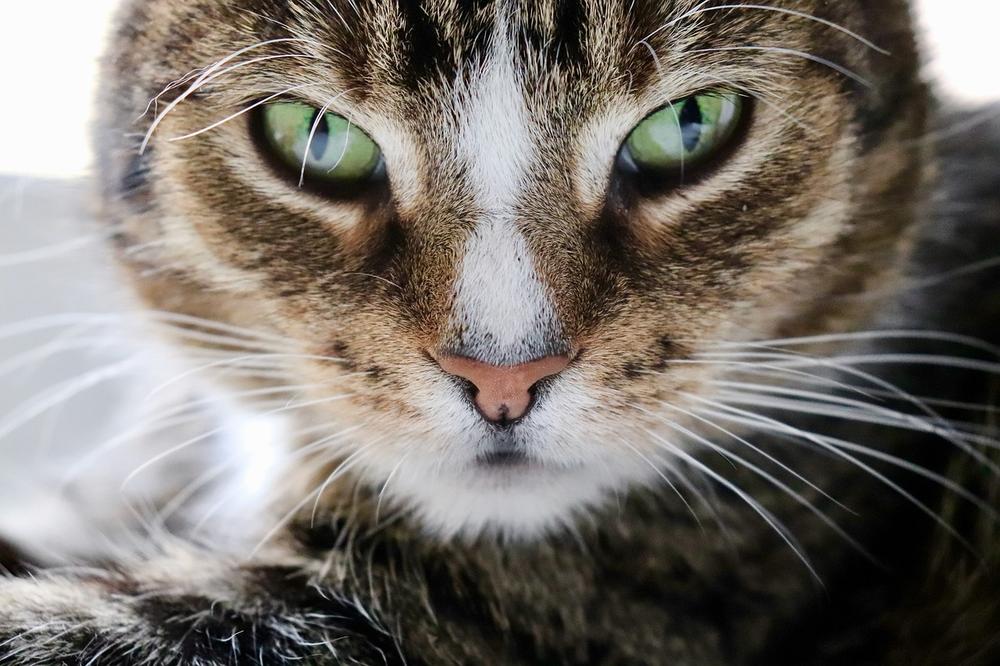
But not wearing a cone can be dangerous, with risks like infections, complications after surgery, injury, or even death. In a few extreme instances, animals have caused severe harm to themselves because they didn't have a cone. That's why you ought to keep the cone on and protect your furry friend from potential harm.
Max Cone Duration for Cats Post-Neutering
- Cats may need to wear a cone for 5 to 14 days after surgery.
- Signs that a cat is ready to have the cone removed include no longer trying to lick or scratch at the incision, feeling better and exhibiting no discomfort or pain, and a fully healed incision site without signs of infection.
- Male cats should wear a cone for about 10 days after neutering, with younger cats needing them for 5-7 days and older cats potentially needing them for 2-3 weeks.
- Different types of surgeries require varying durations of wearing the cone.
- Factors such as age, overall health, activity level, wound type, dissolving time of staples, and aftercare provided can all impact the length of time a cat needs to wear a cone.
- Cones serve as crucial protective barriers to minimize the risk of self-inflicted trauma and infections at the incision site after surgery.
- When choosing a cone for your cat, consider different options like hard plastic, soft e-collars, inflatable e-collars, pillow collars, or cloth cones.
- Elizabethan collars, also known as E-collars or cones of shame, are helpful in preventing further damage to wounds or injuries.
- A well-fitted cone should fit snugly but not be too tight around the neck and extend slightly beyond the tip of the nose.
- Food and water bowls can be placed inside the cone to make them more accessible.
- Supervise the cat initially to prevent accidents or getting paws stuck in the collar.
- Cats can still eat and drink normally with a properly fitted E-collar.
- Keep the cat's wound dry and provide rest and comfort.
- Monitor the incision site for any changes or issues and give prescribed medication or painkillers, if needed.
- Avoid bathing the cat until the incision is completely healed.
And that wraps up today's article.
If you wish to read more of my useful articles, I recommend you check out some of these: Why Is My Cats Nose Bleeding, How to Clean a Cats Nose, Is Your Black Cat Getting White Hairs, Why Do Cat Noses Change Color, and Why Is My Cats Nose Crusty and Black
Talk soon,
-Sarah Davis